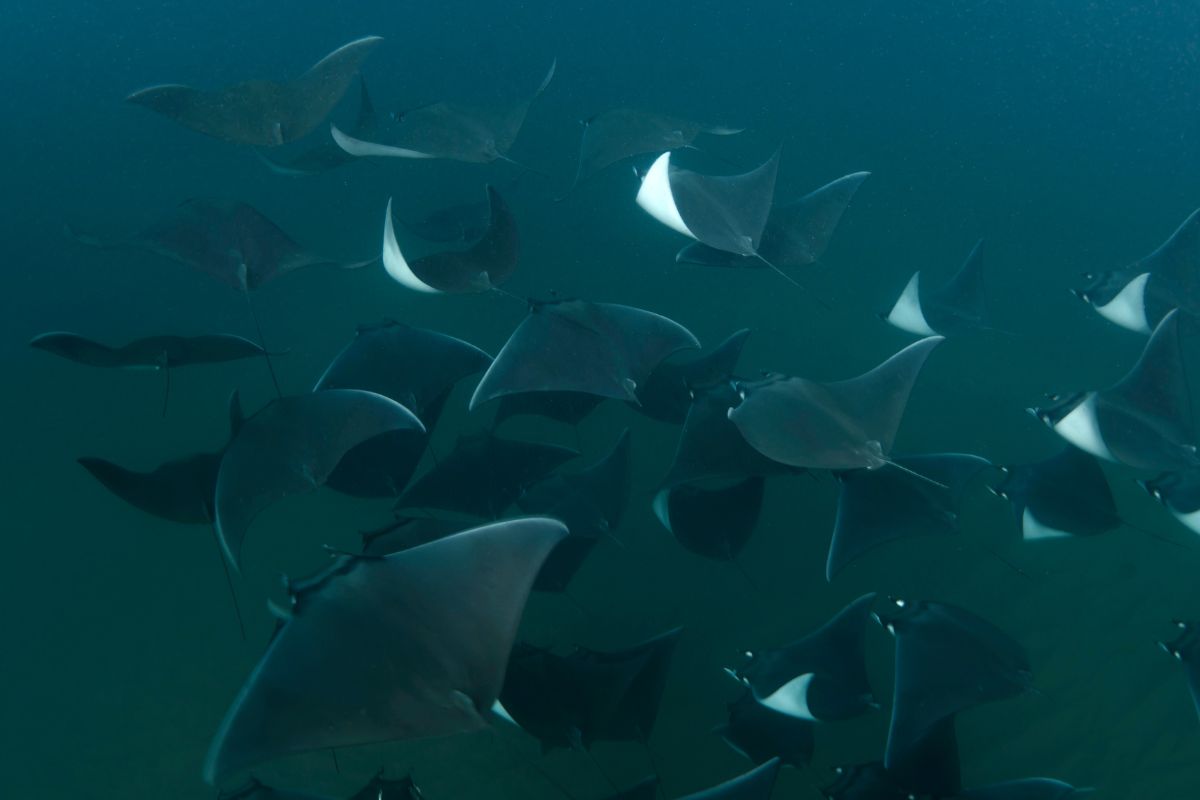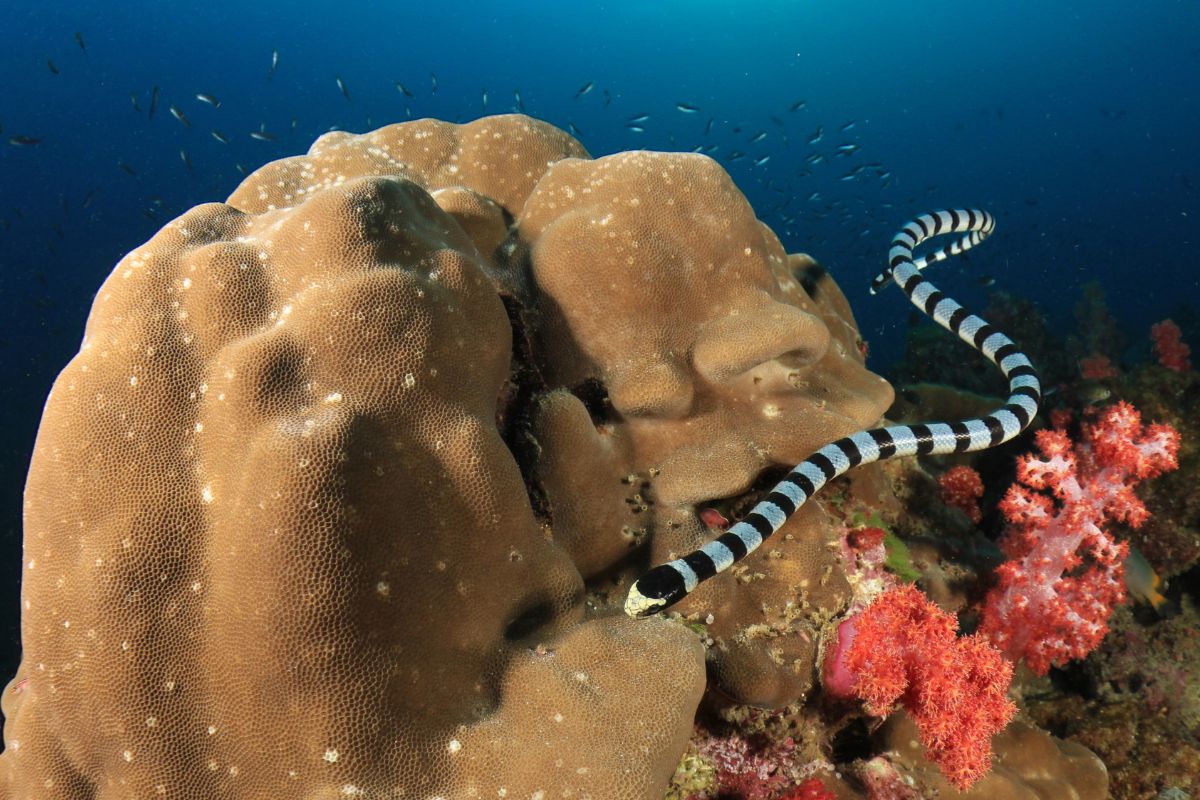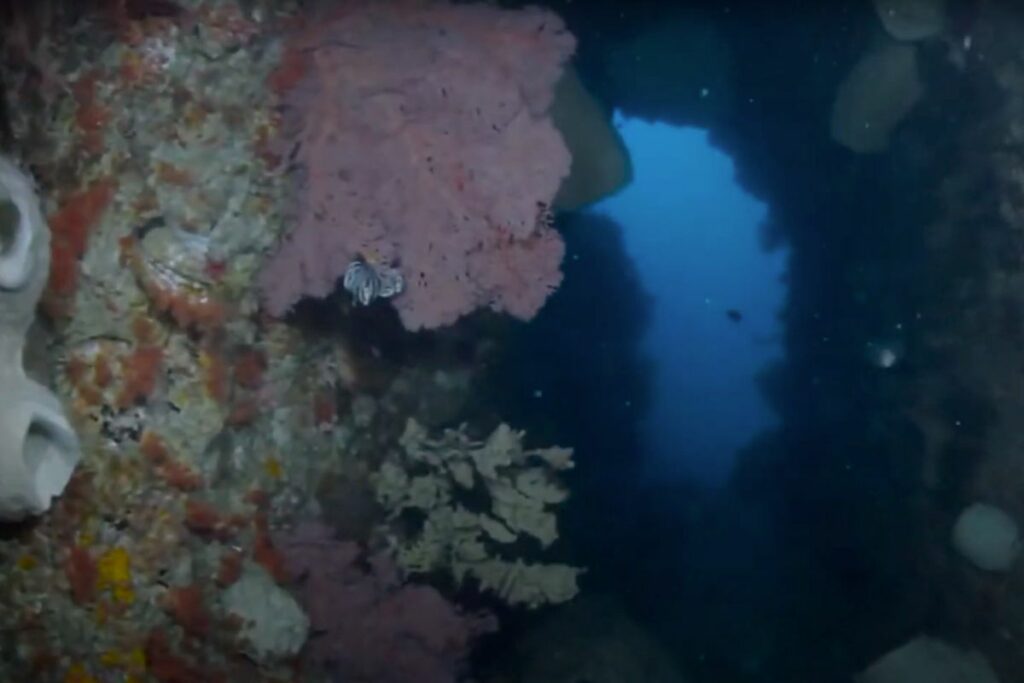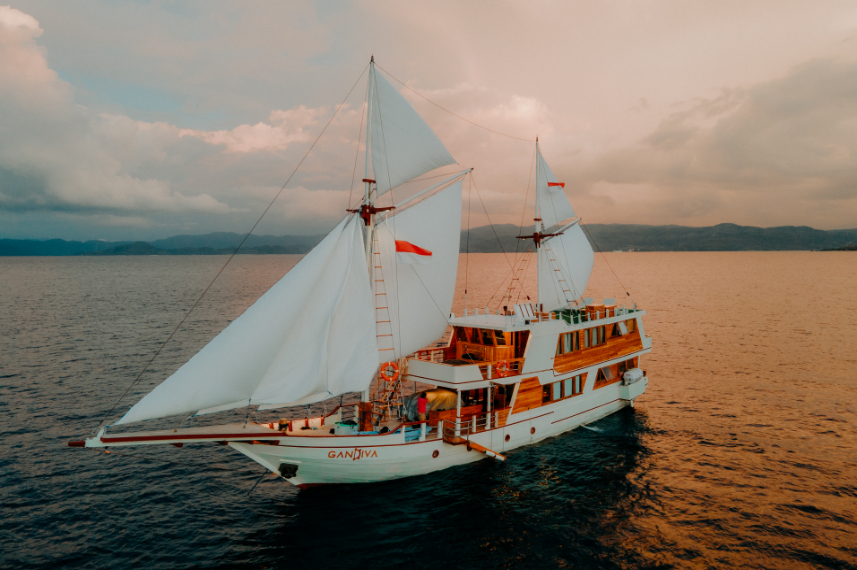Banda Islands
Banda Islands is located right in the heart of the Coral Triangle, which only means one thing: the biodiversity in this area is unsurpassed. A coral wonderland with over 397 species, 683 species of fish, turtles, and some endemic species made this region one of the dream destinations for any diver and marine enthusiasts.
The coral reefs in Banda have experienced unfortunate events, from destructive practices to volcanic eruptions, but it has proven the resilience of these coral reefs is something to be admired. Not only that, the depth of the Banda Sea, which reaches up to 8000 meters—the deepest part of the Earth’s oceans that is not a trench—has been playing a crucial role in protecting marine life from climate change.
Compared to Raja Ampat, diving in the Banda Islands has not become a main attraction yet or has come up in many conversations, but that means the region still has many hidden gems to explore.
Top highlights of Banda Islands
- While exploring the Banda Sea with Liveaboard, there is a chance you will encounter one or more of the 22 species of whales and dolphins spotted in the region.
- Find yourself marveling at the Ambon scorpionfish, one of the most famous endemic species from Banda.
- Discover historical sites in Banda Neira and the chance to imagine yourself transported in the 15th century and how it became the center of nutmeg and mace production in the world.
- Dive alongside dogtooth tuna and mobula rays, which are abundant around the waters of Banda
- Swimming around The Island of Snakes in Manuk Island.
About Banda Islands
Banda is a mini archipelago with eleven volcanic islands consisting of Neira, Gunung Api, Banda Besar, Rhun, Ai, Hatta, Syahrir, Karaka, Manuk, Nailaka, and Batu Kapal located in Maluku, covering the area of 8,150 hectares. From the 15th until the mid-19th century, Banda was the only source to produce nutmeg, pepper, cloves, and mace worldwide and was known as “Spice Islands”. The quality of nutmeg produced here was considered the best, even until today. Due to its high selling price, the Dutch and the British were trying to control the nutmeg trade in the islands, which eventually was monopolized by the Dutch.
Like other regions in East Indonesia, the natural beauty in Banda is also a sight to behold. While Gunung Api and Banda Api are active volcanoes in the islands, providing fertile soil, the underwater scenery can’t be overlooked as it is part of the Coral Triangle.
Diving in Banda Islands
Diving in the heart of The Coral Triangle undoubtedly gives a different vibe than in any other dive site. Aside from marine life's high biodiversity, many endemic species have been recorded and found within the region.
Though it has a long and winding history above the water, the underwater world of Banda is still waiting to be discovered. Take psychedelic frogfish as an example. This particular frogfish can only be found in the Banda Sea, and it is proven to be one of the hardest and rarest fishes to find in the whole world. And the ability to camouflage still stumps many scientists. Imagine yourself seeing one!
The waters around Banda Islands have been the home to turtles, Mobula rays, Napoleon wrasse, gobies, dogtooth tuna, red tooth triggerfish, and especially Ambon scorpionfish and Mandarin fish, which are abundant. Though not a usual sighting, mola-mola can occasionally appear in the area.
The Banda Sea plays a pivotal role as the migratory route for a few species of whales and dolphins, including blue whales, Omura’s whales, orcas, Bryde’s whales, short-finned pilot whales, and spinner dolphins. Consider yourself fortunate if you are able to spot all these whales while diving or exploring the Banda Islands on a liveaboard.
Discover your next adventure in
Gliding Through The Banda Sea with Sea Snakes
Diving with sea snakes might sound alarming, but fear not! Sea snakes are far from aggressive creatures unless provoked. Under the water, diving with sea snakes is not different from diving with a group of anthias or fusiliers.
Two places in Banda named Gunung Api and Manuk are the dive sites for this extraordinary experience. The population of sea snakes, especially olive ones, in these two regions is abundant! Aside from the olive sea snakes, you can also find Banded Sea Kraits swimming elegantly.
The sea snakes in these two sites break the well-known fact that sea snakes are solitary, as you can see up to 20 sea snakes in a single dive. The experience will surely be one of the highlights of your diving.
What makes the sea snakes attracted to these regions instead of other sites in Banda? The answer might be due to the geothermal vents found in Gunung Api and Manuk. The reason sounds reasonable, as Gunung Api is still an active volcano above the water.
Diving Environments in Banda Islands
The secluded location guarantees Banda has excellent underwater visibility on a clear day, reaching up to 40 meters. Of course, this doesn’t apply during the wet season when the water is rough and murky. The crystal-clear water lets you see Banda’s best marine life, especially its coral formations.
The depth in Banda certainly depends on the dive sites and the topography. For example, the coral garden is accessible at 5-10 meters, while the walls and drop-offs can reach beyond 40 meters. This variety ensures there are sites for beginners, intermediate, and advanced divers.
When we discuss the underwater topography, Banda can only be described as exceptional and different. From the vertical walls, pinnacles, cave, and tunnel, even volcanic activities can be found in Banda. Regarding the currents, some dive sites can have strong winds perfect for drift diving, but this isn't suitable for beginner divers.
The water temperature in Banda ranges from 26 degrees Celsius to 30 degrees Celsius, but this fluctuates wildly in the rainy season, where the temperatures drop slightly.
Discover your next adventure in
How to get to Banda Islands
Getting to Banda is not a difficult journey, but it requires patience as to reach the island, you will need to change the mode of transportation.
By plane
Ambon should be your entry point as it is the capital of Maluku province. Domestic flights are available from Jakarta, Bali, or any major cities in Indonesia. Once you arrive in Ambon, you have a choice to travel to Banda Neira, the most developed and the main island in the Banda islands, either by boat, ferry, or charter flight. Please be aware that charter flight is not always available depending on the weather.
By liveaboard
The other option to travel to Banda is by liveaboard. Liveaboard offers you flexibility and comfort as you don’t need to juggle different modes of transportation. Liveaboard also allows you to explore the various diving sites otherwise inaccessible by regular boat.
Diving Seasons & Weather in Banda Islands
The best periods to dive in Banda are from March to April and then from September to November, offering spectacular visibility and calmer seas. From May to August, diving service is not available due to the rough surface.
December to February is the wet season and not ideal for diving as the visibility is limited, and the weather can be unpredictable with choppy seas. Not to mention rainfall is more frequent.























